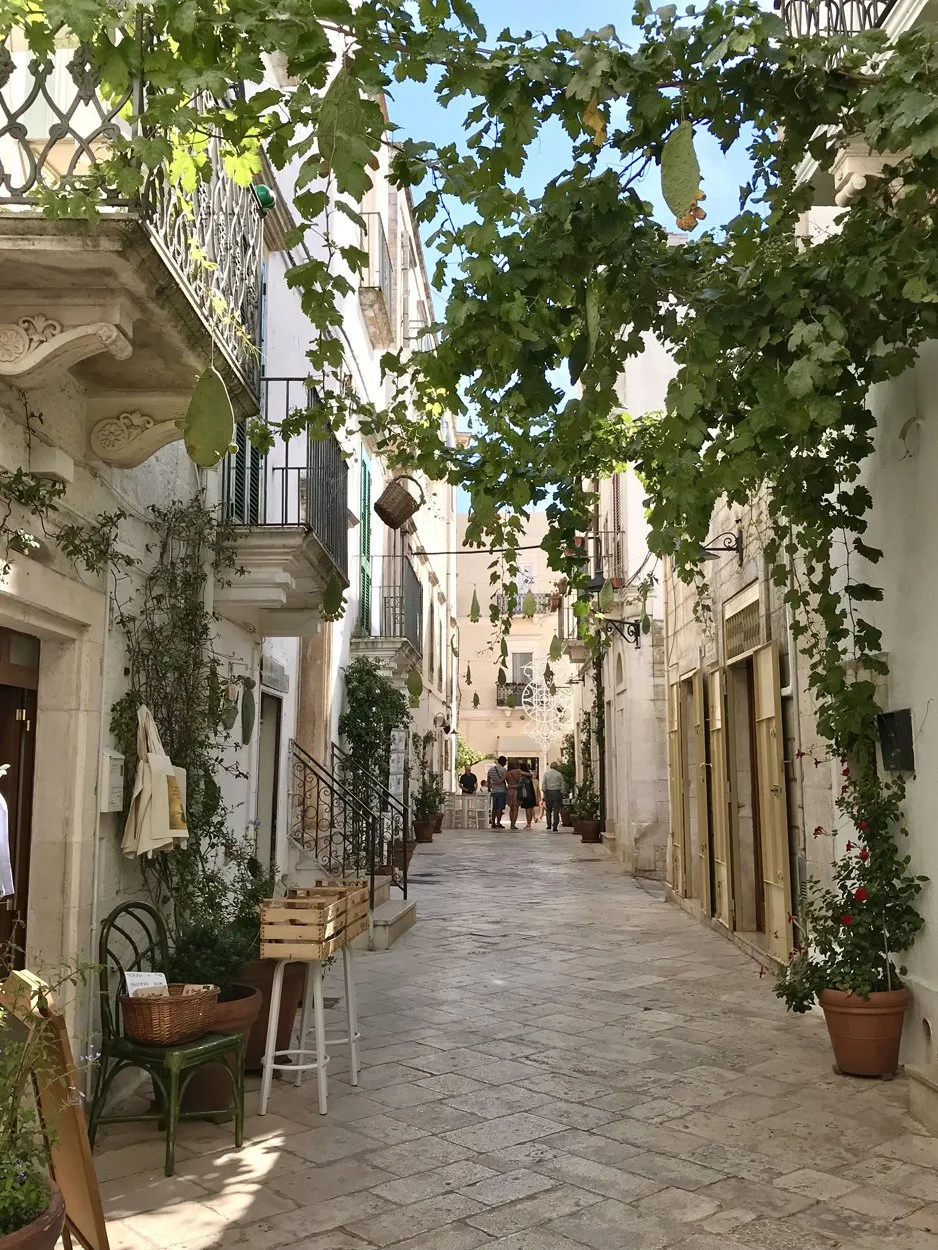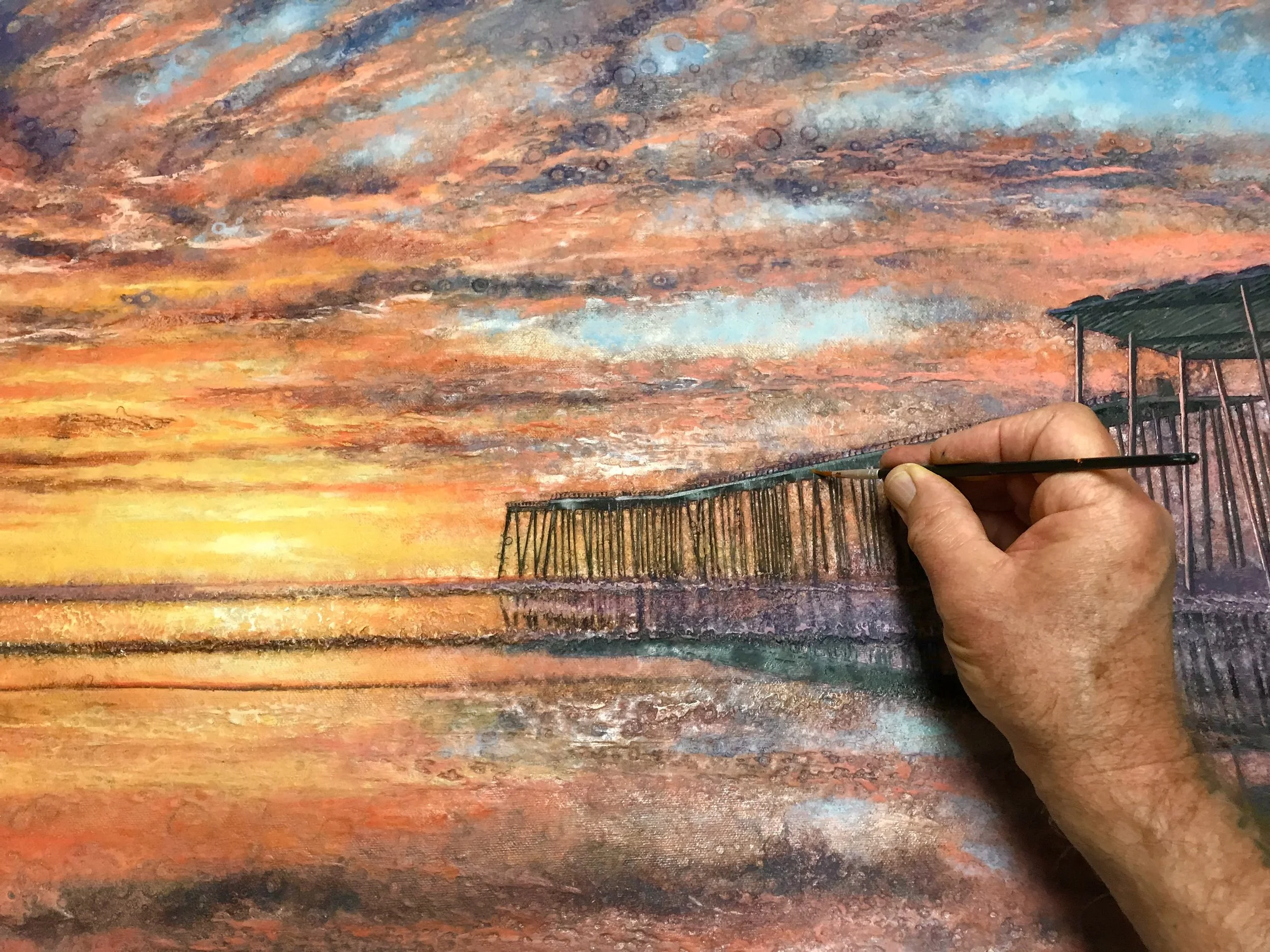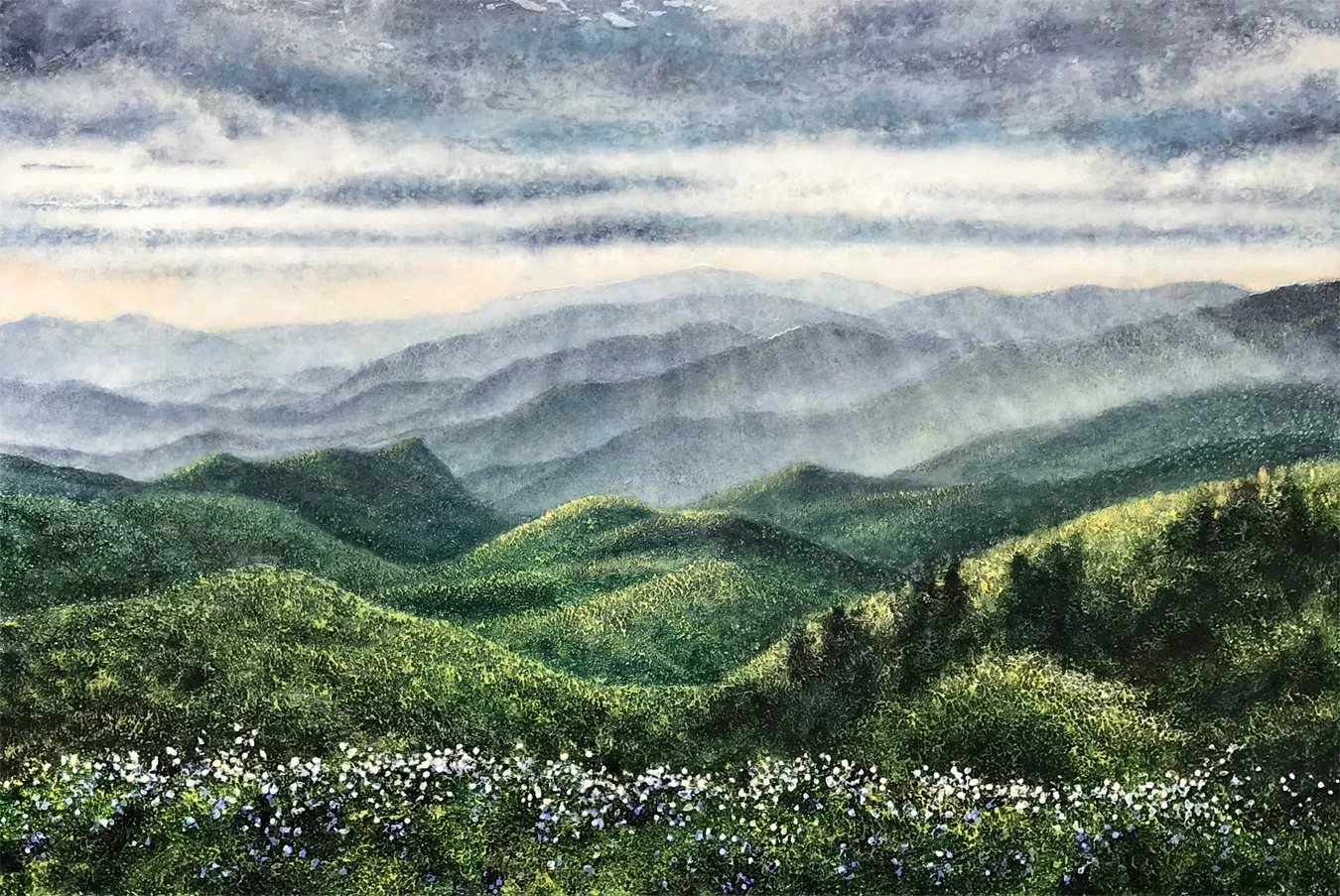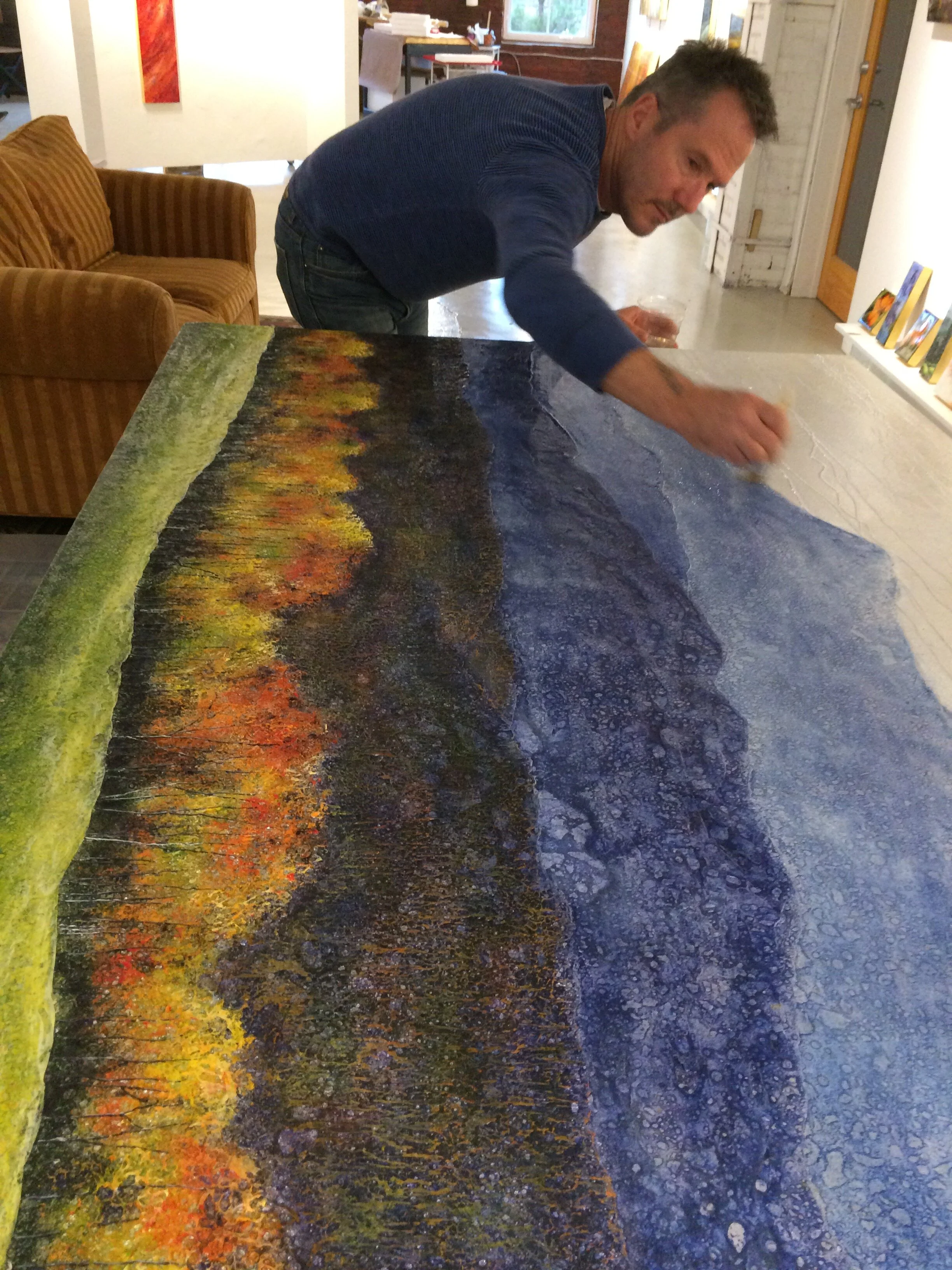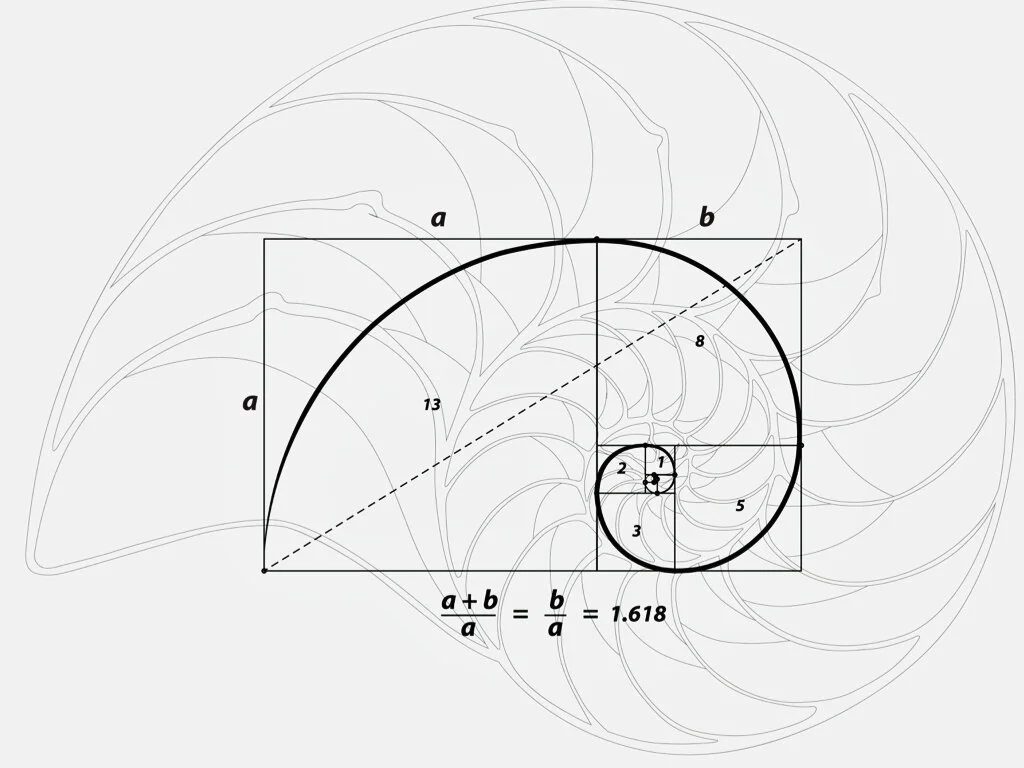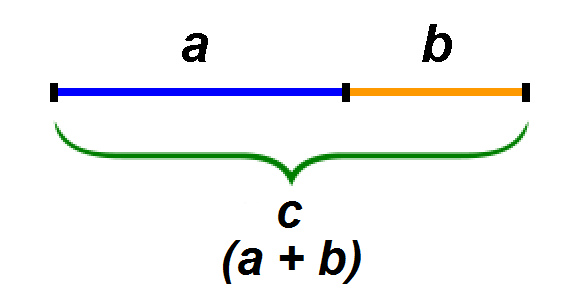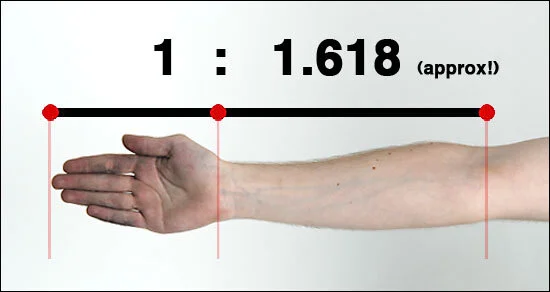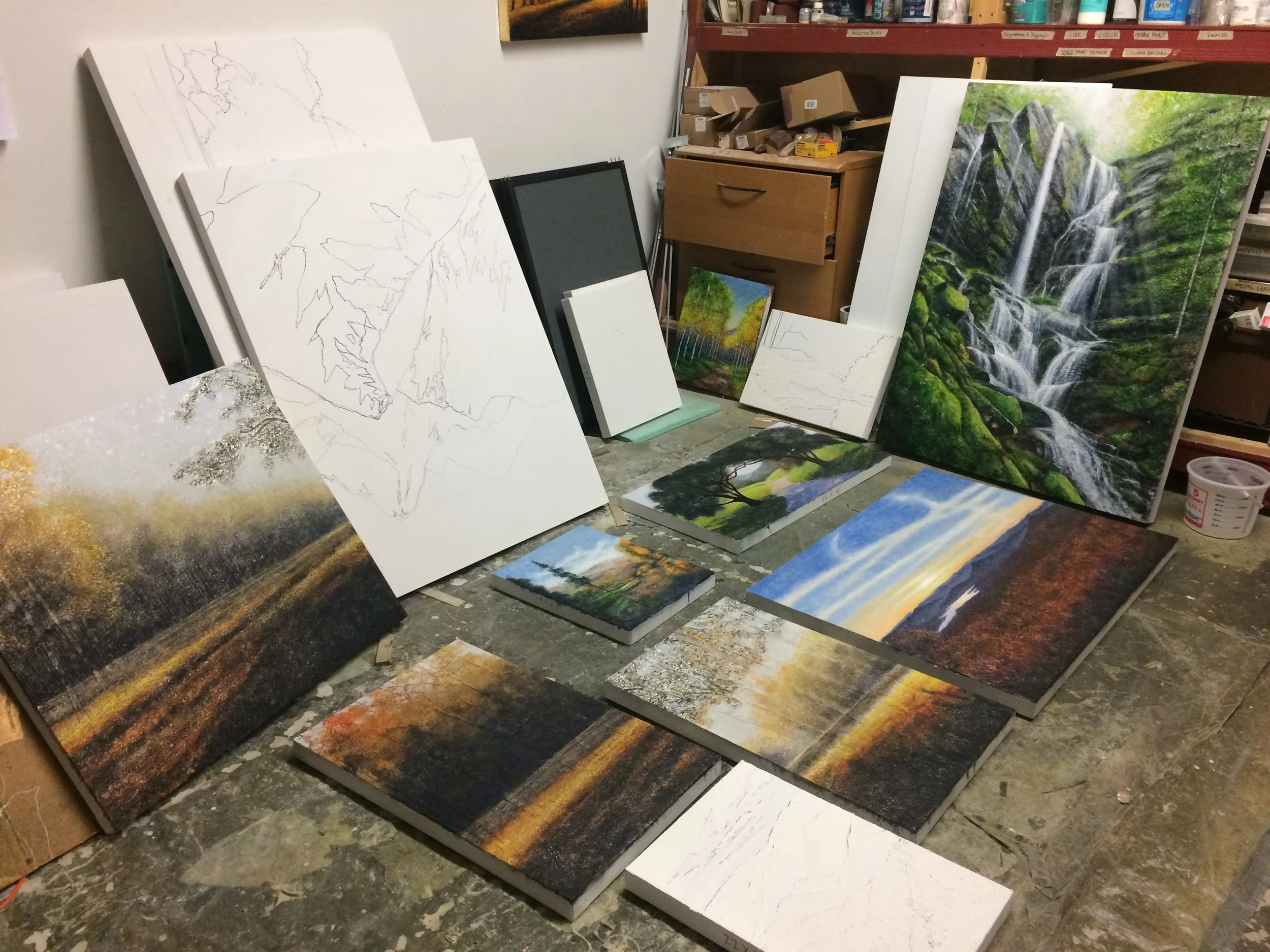
Art Blog
This blog is for posting photos of new artwork and for the expression of sometimes random thoughts of oil painter Stephen St. Claire.
The Enchantment of Art Nouveau
Art Nouveau is exciting in my opinion. I love this period of art. It is art that is whimsical , fluid and themed after nature itself. Art Nouveau speaks like a whisper from nature itself, a dance of lines and light that turns the ordinary into the extraordinary. Born in the late 19th century, it bloomed in defiance of the cold, mechanical world, weaving beauty back into life’s fabric. It was more than an art movement—it was a celebration, a rebellion against the rigid and the mundane, a return to nature’s embrace.
Its fluidity is mesmerizing — the way its curves seem to breathe and flow like vines reaching toward the sun. Alphonse Mucha’s women, draped in golden light and cascading hair, feel like ethereal muses of a forgotten dream. Gustav Klimt’s shimmering canvases, rich with gold and longing, seem to pulse with hidden magic. Even Gaudí’s buildings twist and turn like ancient trees, growing from the earth with wild, organic grace.
“Its fluidity is mesmerizing…”
But what I love most is how Art Nouveau makes art part of life. No longer confined to fancy gilded frames, it spills into the world—etched into wrought iron balconies, swirling through stained glass windows, carved into the very wood beneath our hands. It reminds me that beauty is not something distant or rare; it can be found in the smallest details, in a curve, in a pattern, in the way light filters through glass.
Art Nouveau is a reminder to slow down, to look closer, to breathe in the poetry of the world. It is nature’s art, forever blooming, forever alive.
Graceful curves unfold,
Nature’s whispers in the lines,
Beauty’s breath entwined.
How do you determine the best size artwork to purchase?
I have found that about half the people who wander into my studio don't seem to be too worried about the size of the artwork they're considering purchasing. They have a general idea of what might look correct and from photos they send me of my painting installed on their wall, they're often spot on when it comes to the size of the artwork. The other half of my clients go home and measure their walls. That may be really helpful to avoid a mistake. I've had people tell me they've cut pieces of cardboard to different sizes and tacked them up to the wall. That's a great idea. The other option is to enlist my help with sizing. In this case, my client sends me a photo of the wall in question along with some basic dimensions, and then I take the photo into Photoshop and insert different sizes of gray rectangles on the wall, so my client can see a variety of proportions and sizes. Either way, cardboard or Photoshop can help you visualize exactly what a specific size painting would look like on your wall.
So how do you figure out what size is really best for your space? It kind of depends on a few things. First of all, how big is the wall and what other art is already installed on it? You might consider a small piece of art as an accent piece. An accent piece works best when it contains the complementary color of the main color in the room. It can also be much brighter in color than you'd want in a larger piece. Think of a gemstone on a black velvet background. An accent piece can scream at you "LOOK AT ME!" and that works because it's small.
Or you might need a stand alone piece above a bed or couch. In that case, the size of the bed or couch would determine the optimal size of the painting installed above it. I always recommend choosing artwork that's just a bit smaller than the width of the piece of furniture it's hanging above. If it's too large, it will look ridiculous (see above photo).
The other (and uh...my favorite) option is to choose a very large "heart stopper" piece of art on a large wall. This sort of artwork should be a real "statement piece". Where the accent piece can shout at the viewer, the statement piece should sing (very loudly). The size and the subject matter should work together to produce an emotional response. I once had a 6' x 8' painting hanging in the back of my studio, and I could always tell when a studio visitor rounded the corner because I'd hear things like "Oh...my...gosh" followed by silence as they just stood there. I love that! That's exactly what I wanted when I painted that piece.
So what do you want? What do you need when you consider artwork for your home? Whether it's small, medium, large or gigantic...talk to me. We can figure something out that works best with your specific wall and color scheme.
Question 7: "How do you price your work?"
I am currently in a blog series proposing questions an aspiring full time professional artist ask a current full time professional artist so that they have a better idea of getting from where they are to where they want to be professionally. It’s a really tricky and sometimes difficult thing to make it as an artist. That’s the bad news. The good news is that there are people out there somehow actually doing it, so…don’t reinvent the wheel — TALK to them. Every artist I know personally would be very happy answering questions. So find the artist you’d like to grill, make and appointment and get some advice.
Among the questions I’m proposing is this one I’ve been asked a lot: “How do you price your work?” If you’ve read my blog here, you know I’ve talked about this a lot, so I won’t wax on too long here but some points need to be repeated.
Just last week, I was approached by a gentleman that offered me just over 20% less than my posted price on one of my paintings. This doesn’t bother me at all when people do that. I know a lot of artists set a price for a piece of their work and hope they can get as close to that price as possible. This has trained people to view an art purchase the same way they’d buy a car or a house (i.e. you make a low ball offer, then negotiate). But that means the posted price means nothing and is just there to start the conversation. That is not the way I price my artwork because it feels really arbitrary.
The way I was taught to price my work way back in the day is to let sales themselves dictate the pricing. I price according to the size. So I take the square inches of the work, multiply it by my going rate (and that rate is solely dictated by my sales).
My goal is to sell my work as quickly as I paint it. If I get a big backlog, I know my prices are too high. If my work sells too quickly (I can't have empty studio walls), then my prices are too low. This year, I needed to slow down sales (just slightly) in early spring so I bumped up the price per square inch just slightly. That slowed sales down a bit, but I've actually had to raise prices again in June because they were still selling too quickly.
So that's how I price my work. I don't really take offers because I have a very good idea of what the paintings will sell for. Again, different artists handle pricing different ways, so it’s definitely worth asking around and seeing what works best for you. This works best for me because it’s really easy to defend the prices I have posted when that price is actually based on something concrete like sales rather than something arbitrary like “this is what I’d like to get for this piece”. As a client, I can disagree with what you’d like to get for that piece, but…I can’t disagree with sales.
"How do you Price Your Work?"
I remember when I was a kid, I wanted to be an artist and so, like a lot of would-be artists, I went to art school. They taught us about art history, how to create a dynamic composition, color theory and pretty much everything an artist needs to go out and create a masterpiece. “Pretty much everything” is the key phrase here. The one thing they never mentioned was how to price and sell our artwork. I totally understand that you can’t cover EVERYTHING an artist needs to know in an art school but uh…that little detail seems kind of important.
Over the years, I’ve worked with artists that set their prices based on different criteria. I’ve worked with one artist that set a price of $500,000 on some of his pieces. To him, that’s what it was worth. Then he’d tell people not to be intimidated by the price on the tag, that he’d work with them. He’d follow them out of the studio asking “What do YOU want to pay for it?” I am not making this up. I didn’t see him sell many paintings by the way, which is too bad because I thought he was an excellent artist. He just was never told how to price a painting. His prices were completely subjective.
I don’t price my work that way. I was taught in the beginning of my art career to price by the size; by the square inches of the piece. This way, the only subjective point is at the very beginning — where you start. The first piece I finished for sale in my very first studio in Asheville was at $2.25 per square inch, and I was really excited because my paintings started selling. Then they were selling TOO fast. I couldn’t keep up with it so…I raised the prices to $2.50 per square inch and that slowed sales down just enough. A year later, I had to raise prices to $2.75. I’m now at $3.35 and inching toward $3.50.
The important thing to note is that the ONLY time I arbitrarily set my prices was at the very beginning. But even then, I looked around at what other artists were charging for their work so I had SOME idea of the ballpark to be in. Since then, sales entirely set the price. If sales slow, I keep prices steady, and I’m not above lowering the rate. When, over some months, I see that I’m selling faster than I can paint them, I bump everything up slightly. Understand, I am not bumping prices so I can make more money. I’m bumping prices because a professional artist HAS to have paintings on their wall that are for sale. I pay a premium on studio rent, and if I have empty walls, you might think that’s a good thing because I’m selling my work. But empty walls is ultimately disastrous to an artist’s career. New studio visitors will not consider buying a piece of art that is not there. I HAVE to have a studio full of paintings in order to make a living in this profession. And that means I simply let the rate of sales dictate the price.
Pricing this way is also the easiest way to defend my price to someone who questions why the heck I think this or that piece is worth the number I have on the tag. But really, I DON’T “think” that piece is worth anything in particular. My sales are what set the price on the tag. You can argue with me, but you can’t argue with sales.
So if today, I were to complete a painting that has a price of $500,000, the size would be around 25’ x 42’. Dear reader, if you by chance have a wall that is crying out for a 25’ x 42’ painting (and a 500K budget), please contact me today! Short of that, I will keep painting sizes that I can sell. :)
An Artist in Italy (Part 3)
Alberobello, Italy
I’ve mentioned that one of the things I learned from my time in Italy last September was to look for the most popular places (most likely to be overrun with tourists) and NOT go there. For the most part, that was the rule. But…with every rule, you can make exceptions. We just really tried to make those exceptions with some wisdom. Sometimes, that worked. Like…Alberobello.
“…with every rule, you can make exceptions…”
Alberobello is an amazingly weird little town in Puglia (the heel of the boot of Italy). It’s filled with all these little beehive houses called “Trulli”. And let’s please get it right…when speaking of one of these, it’s “a TRULLO” and when you’re speaking of many, THEY are “TRULLI.” So the town is filled with trulli. They’re everywhere. Many of them have been converted to shops. We stayed in an Airbnb about five kilometers outside of town and IT was a trullo. THEY ARE COOL. The artist in me was so excited seeing these odd, old little stone structures.
“Gosh,” you say, “If I were visiting Puglia, I’d want to see Alberobello!”. Yes, you would and you should. You and thousands of other tourists. Thousands. But like I said previously, this was an exception worth making. I knew this awesome little town was super popular with tourists. So we stayed five kilometers away just outside of another little town called “Locorotondo”. IT was amazing…winding, narrow little streets and all the homes inside the ancient city walls were whitewashed. It was beautiful. AND see, here’s the thing…being so close to Alberobello was awesome for Locorotondo because all the international tourists filled Alberobello and left Locorotondo to Italian tourists (and Joy and I). See how this strategy works???
Locorotondo, Italy
So one thing that I learned in Puglia turned out to be really important to file away in the “never forget this” folder in my brain. Here’s the rule: Never, ever eat a melon without first washing it. I had no idea you were supposed to wash a freaking melon before cutting into it but that’s what happened. It was absolutely wonderful — one of the sweetest melons I’ve ever eaten. And…apparently was covered with salmonella. This kind of wrecked the next day, and the next, and the next. I’d read that usually, symptoms resolve themselves for most people after five days. Well, seven days later I was on the verge of going septic. I don’t ever remember feeling this horrible. Thankfully, I got onto a regimen of Cipro and within about twelve hours, I was feeling mostly normal. We went on to visit Pompeii and then had the last two wonderful days in Rome. I loved Rome. What a charming and beautiful city. But, that two day visit to Rome changed the next couple months of my life. See, after two years of being careful to wear masks in crowded public places (you know where this is going now, right?), and since everyone around us in the trains and buses weren’t wearing masks, all signs were that COVID was a thing of the past. YAY! I was lured into blissful complacency. Two days after arriving back home, both Joy and I tested positive for COVID and folks, it was NOT like a bad cold. Now (two months later), I am finally feeling normal.
“Never, ever eat a melon without first washing it.”
So I can’t wait to go back to Italy. I’ll be avoiding the overly touristy areas, washing melons (washing EVERYTHING I EAT), bringing a mask and eating the most amazing pasta anywhere on earth. Io amo l'Italia!
In my next post, I’ll share three of the paintings I’ve completed now, based on photos I took on this trip. I’m sure there are a lot more painting possibilities amongst my photos but they’re a good start.
What Makes a Painting a Good Piece of Art?
What I do is typically done by myself. I’m an artist and I paint. But the WAY I do it involves regular contact with people who visit Asheville. That keeps me psychologically balanced I think! One of the great things about my business model is that I get to hear all sorts of questions from visitors. Some of them crack me up. Some of them test my patience. And some of them make me think.
One really good question I got a couple weeks ago was from a couple visiting from New Jersey. They love looking at artwork but I could tell they had no confidence in “judging” art, so I had a really great time explaining to them that like it or not, they DO judge art all the time and that that’s okay. That’s a topic for another day, but the question they asked was “Just because I like a painting, does that make it good art? What makes a piece of art “GOOD” art? Is it entirely subjective?”
It needs to adhere to the rules of the craft, or break them skillfully.
Oh, that’s such a great question. My answer took about thirty minutes to explain and I still only scratched the surface. What makes art “great” art IS subjective, but it’s also objective. That combination is what makes it tricky. What makes a painting a great painting is determined the same way as determining what makes a song a great piece of music; what makes a poem a great example of poetry, or what makes a rendition of Beef Wellington a perfect “Beef Wellington”. All art can be judged. I’m not encouraging people to be “judgmental”. I’m just saying that judging all these things is natural and we all do it and that that’s absolutely fine. But just because I personally like this chef or this poet or this musician or this artist does not make what they produce “great”, right? What is that standard something has to meet in order to considered great?
Well, in my opinion…
1) ATTENTION TO DETAIL. It needs to be well-crafted and that well-craftedness should be obvious. There needs to be that mystified “How’d they do that?” asked. Great skill level counts and will be obvious.
2) INNOVATIVE. It needs to display a new take. There is nothing new under the sun, that is true. But to be considered “great”, I think there needs to be something unique about it. Otherwise (even if it’s well done), if it’s just like the next song, poem, plate or painting, what’s the big deal about it? Why does it matter? There must be something that grabs attention. There needs to be some obvious imagination involved in its production.
3) RULES, RULES, RULES. It needs to adhere to the rules of the craft, or break them skillfully. Like it or not, there are rules to art. There are mathematical rules that determine pleasing proportions. There are spelling and punctuation rules used in writing. There are rules that dictate pleasing intervals of sound when one writes a piece of music. There are rules that dictate great or horrible results in cooking. Rules are everywhere. And they can be skillfully broken, but you really need to know those rules intimately, inside and out, before you know how and when to best break them.
The thing is, if there is artistic expression that adheres to these three points, people respond to it. You can’t help but respond to it. It creates pleasure.
At this point in my talk with my studio visitors, the gentleman said, “But when I go into an art museum, half the stuff there just looks like crap to me. I mean, my two year old could do a better job.” Yep. Sometimes I think that good artwork ends up on people’s walls. Artwork that can’t be sold (i.e. no one wants it in their home) ends up in an art museum. Perhaps that’s too cynical. Probably. But there’s an old Dutch saying that probably applies here:
“Just because a mouse lives in a cookie jar does not make it a cookie”.
I think I’ll leave it at that.
The Story Behind…"Gentle Showers on a Summer Afternoon"
Have you ever hiked in the rain? Well, we can now say that we have. Understand, this was not the original plan, but one thing about doing ANYTHING outside in the mountains of Western North Carolina in July is that those plans always need contingencies for an afternoon thunderstorm.
The morning was gorgeous. North Carolina is known for it’s blue sky, and the locals are really proud of it. “Carolina Blue” they call it. And in the mountains above most of the summer humidity, that blue sky is truly gorgeous. So that Saturday morning a couple summer ago, we packed our backpacks with sub sandwiches, lots of water and Pim’s. I’ve written about Pim’s before. Many thanks to the British for that wonderful, awesome “biscuit”. So good. It’s to the point now that it’s just not a proper hike without the Pim’s.
We headed northeast to a trail we’d not taken before (towards Roan Mountain on the Tennessee border) and began our walk. Wildflowers were EVERYWHERE and the air was perfect — warm but not oppressively hot and a wonderful breeze was coming from the west. By early afternoon, a few clouds began gathering over the high peaks and by the time we stopped for lunch, we were getting a few (just a few) rain drops. And then…
“…we looked back across the valley and I kind of gasped…
And then the thunder started, so we spent about an hour hiding under some overhanging rocks by the stream we were following, rating the thunder on a scale of 1-10. We ended up wet and kind of cold (but we still had our Pim’s so all was not lost). After the rain shower was over, we decided to head back to the car as fast as we could because we saw more rain coming in the distance. When we got back to the car though, we looked back across the valley and I kind of gasped. I pulled out my phone and snapped a photo. And then…I painted it.
I think the moral of the story is that even when something uncomfortable or frightening is happening, I need to look around and see the beauty around me even then. Sometimes it’s exquisite. Sometimes it’s worth painting!
Your Opinion Please...
Okay so, I have a question and I’d be really curious about YOUR answer (ALL OF YOU READING THIS). True confessions…I love to explore, and then I love to paint what I find on that exploration. Most of what the visitors to my Asheville studio see on my gallery walls is the result of me painting what my wife Joy and I discover while exploring the western North Carolina mountains.
I was told years ago that what I paint and display in my Asheville studio should be (since it’s western North Carolina we’re talking about) Western North Carolina scenes. If that is really the case, I can be happy with that guideline probably forever. I love this part of the country. I love our gentle mountains. Places like Grandfather Mountain, Gorges State Park, Smoky Mountains National Park, and pretty much any vista seen from the Blue Ridge Parkway — there is far more than one lifetime of potential paintings right here. But…
In your opinion, should I stick mostly to local scenes or when I travel to various parts of the country (or various parts of the world), would you like to see paintings inspired by those places? I love painting. Period. I could probably paint my navel and be happy (but it would not sell). Trust me on that. I need to paint sellable paintings since selling my paintings is what I do to pay my mortgage and buy food to eat. And I like food to eat. I need what I choose to paint to (eventually) be sellable. So do I paint what excites me even if it’s a scene that is set far from an Asheville, North Carolina locale, or should I play it safe and continue to mostly paint local scenes?
That’s my question. And your response here would be SO much appreciated.
Questions and Answers
A few weeks ago, I asked my Facebook followers if they had any questions regarding my work as an artist. Wow. Facebook peeps like questions like that. So…here are some questions from y’all and here are my answers:
Do you paint in any other styles besides landscape and an occasional abstract?
Well, no. I don’t paint figures anymore, and no animals. And I don’t paint still life. At this point in my career, I know what sells and I know what I enjoy painting most. Thankfully, it turns out I can make a living painting what I love best (landscapes and abstracts). I enjoy painting so much, but it’s so awesome to actually sell my work to someone that wants to make it a part of their home. What an amazing thing! So I’m always balancing what I love to paint with what I think will sell. Thankfully, they’re usually the same thing.
Do you have periods of artist block as writers often do?
Not really. Painting is so much fun. For me, it’s “life-giving”. That said, I am a huge proponent of taking time to sit and think, sit and feel, sit and pray, sit and do nothing. I am a “navel gazer”. I think that when creatives have a “block”, they need to take that really seriously and take some “down time”. I look at creative expression akin to “exhaling”. If you don’t inhale, you have nothing to exhale. And then you die. I’m not ready for that yet. So I encourage people to be thinking in terms of “soaking in” and “wringing it all out”. I make a living “wringing it all out.” But if I’m not “soaking it in”, I have nothing, and that doesn’t sound like much fun to me.
Is there a specific place you have yet to visit that beckons to you?
Well, funny you should ask.
Daily, I feel the desire to explore more of Italy. COVID has messed with my plans to return there but from the time I left Italy three years ago, I’ve fixated on finding a way to get back and really explore a lot more. I was so taken with the place that I began learning to speak Italian. It’s my hobby, and has become part of my daily routine. And after three years of learning, I’m about as fluent as a three year old! Woo Hoo!
I love Italy for two reasons: the landscape (cool ancient villages perched on hillsides) and the people. I’m an introvert and from what I experienced, I think you’d be hard-pressed finding an introvert in Italy. But rather than irritate me, I find myself fascinated. They’re are such a social people and I really love that. Americans can be so independent and disconnected from each other. It was a beautiful thing to see people interacted like I saw there.
Whenever I visit someplace new, I always come away with ideas for new artwork. I can’t help that. When an artist sees and feels something amazing, they have to express that amazement. We do that with our artwork, and then hopefully sell it!
So…I think I should be able to write the whole trip off on my taxes, right??
How to Create the Perfect Painting
“Your compositions seem…comfortable,” said a recent studio visitor. He went on, wondering out loud, “I’m not sure what I even mean. They have nice proportions”. Little did this gentleman know, but he just wandered into one of the subjects I truly geek out over: the Golden Section. Look it up. You’ll probably geek out too. It’s the secret to perfect proportions.
This is not just some ancient and obscure math formula. It is literally the language by which the universe was designed.
As a kid, I hated math. It was dry, dead and boring. But as I grew up, I came to realize that math was handy. You can balance a checkbook (if you really need to) with math. I had no idea that math could actually be elegant and beautiful. With math, you can construct perfection. With math, you can design using the the Golden Section (also called the Golden Mean and Divine Proportion). What is the Golden Section? Imagine a line (C) that is cut into two sections: a longer section (A) and a shorter section (B). When the ratio of the whole line (C) to the longer segment (A) is equal to the ratio of the longer segment (A) to the shorter segment (B), THAT ratio is the golden section. It is the ratio: 62:38 or 1:1.618.
This is not just some ancient and obscure math formula. It is literally the language by which the universe was designed. That’s a really big deal. Let me illustrate.
If you take the average height of a human and divided it into two (using the golden section), you locate the navel.
If you take the average distance from your shoulder to you fingertips and divide your arm into two sections (using the golden section), you locate your elbow. Divide the distance between your elbow and your fingertips (using the golden section) and you locate your wrist. Keep dividing and you locate each knuckle all the way to the end.
If you take the length of a dolphin, and divide it into two (using the golden section), you locate the dorsal fin.
The Golden Section was used to design the footprint for the pyramid complex of Giza as well as the actual shape of the pyramids. See, if you draw a ling straight down from the tip of the pyramid to the ground, and then from that point to the outside edge of the pyramid, THAT is the golden section. This ratio was used in the design of the parthenon and the Arc of the Covenant in the Bible, and innumerable cathedrals constructed over the centuries.
This ratio is even found in nature. If you take the distance from the sun to the orbit of Venus, and divide that distance in two (using the golden section), you locate the orbit of Mercury. If you take the distance from the sun to Earth and divide that distance in two (using the golden section), you locate the orbit of Venus. This works clear out to the orbit of Venus. You can even see the Golden Section in the spacing of the rings of Saturn.
So what? Well, for some reason, that proportion is the “gold standard” of pleasing proportions. The closer to that proportion you get, the happier your eye will be. And so, knowing that, find a painting or photo you really like. It could be depicting nature or architecture. If that photo is “pleasing to look at”, chances are, the Golden Section is all over it like an invisible scaffolding holding up the visible artwork (or edifice).
Because of all this, I am regularly using math to plan my compositions. Take the height of my painting, say 24”. To locate the horizon, I’ll calculate 38% of that total distance, and draw the horizon line 9-1/8” up from the bottom. To locate the tall tree I want as the focal point of the painting, I’ll draw a line over from the edge that is 38% of the overall width of the canvas. Using this ratio as a guide, I’m sure to design a painting that will eventually be proportioned as close to perfection as I can get it. The rest is just slapping some paint in the right places and voila, a perfect painting! Easy, right?
Blog Archive
-
2025
- Dec 25, 2025 Finding Peace in the Christmas Chaos Dec 25, 2025
- Dec 14, 2025 Seeing Meaning: How Medieval Art Spoke Without Words Dec 14, 2025
- Nov 19, 2025 The Matterhorn and the Magic of Transformation Nov 19, 2025
- Nov 13, 2025 Commissions vs Completed Pieces…Which is Right for You? Nov 13, 2025
- Oct 28, 2025 What can I learn from Makoto Fujimura in 2025? Oct 28, 2025
- Oct 12, 2025 What can I learn from Pablo Picasso in 2025? Oct 12, 2025
- Oct 10, 2025 What can I learn from Raphael in 2025? Oct 10, 2025
- Oct 8, 2025 What can I learn from Georgia O’Keefe in 2025? Oct 8, 2025
- Sep 28, 2025 What can I learn from Caravaggio in 2025? Sep 28, 2025
- Jul 25, 2025 What can I learn from Thomas Gainsborough in 2025? Jul 25, 2025
- Jul 20, 2025 What can I learn from Leonardo da Vinci in 2025? Jul 20, 2025
- Jul 15, 2025 What can I learn from Michelangelo in 2025? Jul 15, 2025
- Jul 2, 2025 What can I learn from Van Gogh in 2025? Jul 2, 2025
- Jun 25, 2025 What can I learn from Renoir in 2025? Jun 25, 2025
- Jun 23, 2025 What can I learn from Claude Monet in 2025? Jun 23, 2025
- Jun 21, 2025 Using Complimentary Colors for Shading Jun 21, 2025
- Jun 17, 2025 How and When to use Complimentary Colors Jun 17, 2025
- May 30, 2025 Perspective in Art 101: How to Make Your Drawings Pop Off the Page May 30, 2025
- May 26, 2025 How to Really Understand Medieval Art May 26, 2025
- May 22, 2025 Staying Creative May 22, 2025
- May 10, 2025 AT Experience May 10, 2025
- May 3, 2025 Go Take a Walk! May 3, 2025
- Apr 25, 2025 Periods of Art: Mannerism Apr 25, 2025
- Apr 17, 2025 Finding Meaning in the Abstract: Pointers for Understanding Modern Art Apr 17, 2025
- Apr 16, 2025 The Quiet Labor Apr 16, 2025
- Apr 12, 2025 To Art: a Poem Apr 12, 2025
- Apr 5, 2025 The Enchantment of Art Nouveau Apr 5, 2025
- Mar 23, 2025 "What was it like going to art school?" Mar 23, 2025
- Mar 18, 2025 Why I Love the Rococo Period Mar 18, 2025
- Mar 4, 2025 Expressing Joy Through Art Mar 4, 2025
- Feb 28, 2025 The Connection Between Art and Frustration Feb 28, 2025
- Feb 23, 2025 Neoclassicism: Bringing Ancient Style Back to Life Feb 23, 2025
- Feb 18, 2025 On my walk Feb 18, 2025
- Feb 12, 2025 Art at the Very Beginning Feb 12, 2025
- Feb 10, 2025 Monet and Renoir: A Personal Reflection on Their Differences Feb 10, 2025
- Feb 6, 2025 The Fount of Creation: A poem Feb 6, 2025
- Feb 1, 2025 The Connection Between Art and Grief Feb 1, 2025
- Jan 29, 2025 A Journey Through Medieval Art: Stories from the Middle Ages Jan 29, 2025
- Jan 26, 2025 The Story of Art: The Romantic Period Jan 26, 2025
- Jan 16, 2025 The Relationship Between Music and Painting Jan 16, 2025
- Jan 12, 2025 Periods of Art: Baroque Jan 12, 2025
- Jan 11, 2025 Marketing your Artwork Jan 11, 2025
- Jan 7, 2025 Exploring the Golden Ratio in Art Jan 7, 2025
- Jan 3, 2025 Artistic Enlightenment: Lessons from Italy Jan 3, 2025
-
2024
- Dec 29, 2024 Why Travel is Crucial for Unleashing Creativity Dec 29, 2024
- Dec 22, 2024 Steps to Becoming a Full-Time Professional Artist Dec 22, 2024
- Dec 10, 2024 How to Determine Subject Matter for Your Next Painting Dec 10, 2024
- Dec 3, 2024 My Favorite Artist Dec 3, 2024
- Dec 1, 2024 Creativity and Exploration Dec 1, 2024
- Nov 13, 2024 Impressionistic Heroes of Mine Nov 13, 2024
- Nov 10, 2024 "So how do you DO this?" Nov 10, 2024
- Nov 3, 2024 Discovering the Bond Between Nature and Art Nov 3, 2024
- Nov 1, 2024 How Art Can Help Us Cope with Stress Nov 1, 2024
- Oct 27, 2024 How to Select the Perfect Art for Your Home Oct 27, 2024
- Oct 24, 2024 What to Do When You Feel Like Giving Up as an Artist Oct 24, 2024
- Oct 14, 2024 Book Review: The Artist’s Way Oct 14, 2024
- Oct 11, 2024 How to find Inspiration for your art Oct 11, 2024
- Sep 24, 2024 Crafting the Perfect Title for Your Artwork Sep 24, 2024
- Sep 14, 2024 The Worst Advice I’ve Ever Received as an Artist Sep 14, 2024
- Sep 8, 2024 Overcoming Artist’s Block: Practical Tips Sep 8, 2024
- Aug 30, 2024 Exploring Lessons from Vincent van Gogh Aug 30, 2024
- Aug 29, 2024 Why Purchase Original Artwork? Aug 29, 2024
- Aug 25, 2024 How do you determine the best size artwork to purchase? Aug 25, 2024
- Aug 15, 2024 "So, what's this painting worth?" Aug 15, 2024
- Aug 9, 2024 What color art would go best in my home? Aug 9, 2024
- Aug 4, 2024 How to deal with criticism as an artist Aug 4, 2024
- Mar 27, 2024 Question 12: "What do you do when you have a mental block?" Mar 27, 2024
- Mar 27, 2024 New Goals + Winter Months = "Outside the Box" Creativity Mar 27, 2024
- Jan 8, 2024 Question 11: Where do you get inspiration for your work? Jan 8, 2024
-
2023
- Sep 11, 2023 Question 10: "Do you have your work in galleries?" Sep 11, 2023
- Aug 27, 2023 Question 9: "How do you manage the business side of your art business?" Aug 27, 2023
- Aug 20, 2023 Question 8: "Do you advertise?" Aug 20, 2023
- Aug 13, 2023 Question 7: "How do you price your work?" Aug 13, 2023
- Jul 30, 2023 Question 6: "What are the positive points and negative points about having an 'open studio'?" Jul 30, 2023
- Jul 19, 2023 Question 5: "Would you mind critiquing my work at some point?" Jul 19, 2023
- Jul 1, 2023 Question 4: "Would you recommend art school, and if so, how would you find the right one?" Jul 1, 2023
- Jun 24, 2023 Question 3: "Did you go to art school? If so, where?" Jun 24, 2023
- Jun 16, 2023 Question 2: "How long have you been selling your work professionally?" Jun 16, 2023
- Jun 10, 2023 Question 1..."How long have you been an artist?" Jun 10, 2023
- Jun 4, 2023 So, you're thinking about art as a career? Jun 4, 2023
- Mar 3, 2023 "What inspires you as an artist?" Mar 3, 2023
- Feb 15, 2023 Should I buy a completed painting OR commission a painting? Feb 15, 2023
- Jan 23, 2023 "How do you Price Your Work?" Jan 23, 2023
-
2022
- Dec 1, 2022 An Artist in Italy (Part 3) Dec 1, 2022
- Nov 16, 2022 An Artist in Italy (Part 2) Nov 16, 2022
- Nov 8, 2022 An Artist in Italy (Part 1) Nov 8, 2022
- Oct 10, 2022 When Remodeling a Home... Oct 10, 2022
- Aug 22, 2022 How to Handle Failure Aug 22, 2022
- Jun 3, 2022 "What is it like being an artist these days?" Jun 3, 2022
- May 21, 2022 "Are All Artists Introverts?" May 21, 2022
- May 9, 2022 What Makes a Painting a Good Piece of Art? May 9, 2022
- Apr 1, 2022 The Story Behind…"Gentle Showers on a Summer Afternoon" Apr 1, 2022
- Mar 19, 2022 The Story Behind..."Blue Ridge Summer Afternoon" Mar 19, 2022
- Feb 18, 2022 Your Opinion Please... Feb 18, 2022
- Jan 22, 2022 What's in a Compliment? Jan 22, 2022
-
2021
- Dec 25, 2021 My Christmas Present to Joy Dec 25, 2021
- Dec 12, 2021 Deep in the Heart Dec 12, 2021
- Nov 29, 2021 "How do you know you're done with a painting?" Nov 29, 2021
- Nov 1, 2021 Does it Matter What Other People Think of My Art? Nov 1, 2021
- Oct 12, 2021 Creatively Inhaling... Oct 12, 2021
- Aug 31, 2021 More Fun than I Know What to do With Aug 31, 2021
- Aug 13, 2021 “Are You Self Taught?” Aug 13, 2021
- Jul 21, 2021 New Art Gallery on the West Coast Jul 21, 2021
- Jun 23, 2021 "Art from the Heart" vs "Commissioned Art" Jun 23, 2021
- May 28, 2021 More Questions and Answers May 28, 2021
- May 17, 2021 What does Diversity have to do with honest artwork? May 17, 2021
- May 4, 2021 More Questions and Answers May 4, 2021
- Apr 30, 2021 Questions and Answers Apr 30, 2021
- Apr 16, 2021 And the Next Blog Post is... Apr 16, 2021
- Mar 10, 2021 How do you create when you don't feel like creating? Mar 10, 2021
- Feb 11, 2021 "Mullaghmore": The Story Behind the Painting Feb 11, 2021
- Jan 28, 2021 A Look Back to "The Dark Year" Jan 28, 2021
- Jan 17, 2021 Studio Expansion...Hello Northeast! Jan 17, 2021
- Jan 7, 2021 How to Create the Perfect Painting Jan 7, 2021
-
2020
- Dec 1, 2020 A personal answer to a personal question... Dec 1, 2020
- Nov 4, 2020 Using Art to Express my Politics Nov 4, 2020
- Oct 16, 2020 Sometimes, just "having fun" is a good enough reason Oct 16, 2020
- Oct 4, 2020 The Best Painting Delivery Ever... Oct 4, 2020
- Sep 7, 2020 How a Dinky Little Virus Changed my Art Business Sep 7, 2020
- Aug 9, 2020 Adaptation: Survival of the Most Flexible Aug 9, 2020
- Aug 3, 2020 Story Behind the Painting: "Sundown over the Blue Ridge" Aug 3, 2020
- Jul 18, 2020 Cure for Covid blues Jul 18, 2020
- Jul 5, 2020 Where Does it Take You? Jul 5, 2020
- Jun 3, 2020 Story Behind the Painting: Autumn Day on the French Broad River Jun 3, 2020
- May 24, 2020 Story Behind the Painting: Saint-Jean-Cap-Ferrat May 24, 2020
- Apr 30, 2020 Q&A: SESSION TWO Apr 30, 2020
- Apr 22, 2020 Q&A: SESSION ONE Apr 22, 2020
- Apr 8, 2020 What I'll Miss When This Pandemic is Over... Apr 8, 2020
- Mar 20, 2020 Entertaining Angels Unawares Mar 20, 2020
- Mar 8, 2020 In Celebration of Art Mar 8, 2020
- Feb 27, 2020 "The Bridge" Feb 27, 2020
- Feb 8, 2020 The Most Interesting Question of the Year (but it's only February so...) Feb 8, 2020
- Jan 29, 2020 "Can I Watch You?" Jan 29, 2020
- Jan 14, 2020 From Point A to Point Z Jan 14, 2020
- Jan 5, 2020 An Impractical Idea Jan 5, 2020
-
2019
- Dec 17, 2019 My Beautiful Baby on Display Dec 17, 2019
- Dec 3, 2019 Regarding the Selection of an Artistic Theme Dec 3, 2019
- Nov 20, 2019 "What's Your Best Price on This Piece?" Nov 20, 2019
- Nov 13, 2019 A Really Unique Commission Project Nov 13, 2019
- Nov 6, 2019 Fun with Art Scammers Nov 6, 2019
- Nov 3, 2019 "How did you know you wanted to be an artist?" Nov 3, 2019
- Oct 30, 2019 How do you know when a painting is "done"? Oct 30, 2019
- Oct 20, 2019 The piece I had to paint: "Côte d’Azur" Oct 20, 2019
- Oct 18, 2019 Inspiration Everywhere! Oct 18, 2019
- Aug 26, 2019 Contentment vs Restlessness Aug 26, 2019
- Aug 14, 2019 "Why Should I Purchase Artwork?" Aug 14, 2019
- Aug 11, 2019 What Was Art School Like? Aug 11, 2019
- Aug 7, 2019 "The Four Seasons on the French Broad River" Aug 7, 2019
- Jul 30, 2019 Joy Unspeakable Jul 30, 2019
- Jul 7, 2019 Of Mountains and Oceans Jul 7, 2019
- Jul 3, 2019 Lessons I've Learned as an Artist Jul 3, 2019
- Jun 26, 2019 St.Claire Art Opening at the AC Hotel, Asheville Jun 26, 2019
- Jun 23, 2019 "How do you decide what to paint?" Jun 23, 2019
- Jun 5, 2019 One of my All-Time Heroes Jun 5, 2019
- Jun 2, 2019 Regarding "Inspiration" vs "Necessity" Jun 2, 2019
- May 29, 2019 The Best Complement I've Ever Received May 29, 2019
- May 19, 2019 "What are you Working on These Days?" May 19, 2019
- May 5, 2019 "Frankenstein-ing" a painting May 5, 2019
- Apr 17, 2019 The Big Reveal Apr 17, 2019
- Apr 3, 2019 "How do you Decide What to Paint?" Apr 3, 2019
- Mar 27, 2019 "I'm just not making the sales I need!" Mar 27, 2019
- Mar 20, 2019 Making the Most of Mistakes Mar 20, 2019
- Mar 10, 2019 Exploring Austin Galleries, Part 2 Mar 10, 2019
- Feb 25, 2019 Exploring Austin Galleries, Part 1 Feb 25, 2019
- Feb 10, 2019 Progress! Feb 10, 2019
- Jan 23, 2019 Preliminary Photos of my "Sails" Prototypes Jan 23, 2019
- Jan 16, 2019 The Benefits of Slowing Down Jan 16, 2019
- Jan 8, 2019 New Idea Taking Shape Jan 8, 2019
-
2018
- Dec 29, 2018 Looking Back and Looking Ahead Dec 29, 2018
- Dec 19, 2018 Percolating Creativity Dec 19, 2018
- Dec 16, 2018 So then... Dec 16, 2018
- Dec 12, 2018 What if... Dec 12, 2018
- Dec 5, 2018 Recent Projects on my Plate Dec 5, 2018
- Dec 3, 2018 Claude: My Creative Hero and Muse Dec 3, 2018
- Nov 22, 2018 Lessons I've Learned as an Artist Nov 22, 2018
- Nov 12, 2018 Planning for a Second Studio Location! Nov 12, 2018
- Nov 7, 2018 Steps Involved with a Painting Commission Nov 7, 2018
- Nov 4, 2018 How do you stay "balanced"? Nov 4, 2018
- Oct 28, 2018 What makes art "Art"? Oct 28, 2018
- Oct 21, 2018 "How Did You Stumble Across This Type of Artwork?" Oct 21, 2018
- Oct 17, 2018 "A Personal History" Oct 17, 2018
- Oct 14, 2018 Commission Confusion Oct 14, 2018
- Oct 10, 2018 "Aqueous Dream" Oct 10, 2018
- Oct 7, 2018 Beauty in the Center of the Pit Oct 7, 2018
- Sep 30, 2018 Only North Carolina? Sep 30, 2018
- Sep 23, 2018 The Price of Being a Landscape Painter Sep 23, 2018
- Sep 9, 2018 Thoughts on New Directions, New Possibilities Sep 9, 2018
- Aug 29, 2018 SURVEY: GLOSSY OR SATIN Aug 29, 2018
- Aug 22, 2018 Regarding Commissioning a Painting Aug 22, 2018
- Aug 19, 2018 On the Brink of a Huge Failure Aug 19, 2018
- Aug 7, 2018 "The Trail That Never Ends" Aug 7, 2018
- Aug 5, 2018 Inspration Begets Inspiration Aug 5, 2018
- Jul 19, 2018 Rejuvenating Creativity! Jul 19, 2018
- Jul 15, 2018 A Word About Accolades Jul 15, 2018
- Jul 10, 2018 Where it Began Jul 10, 2018
- Jul 4, 2018 Funny Things People Say in an Art Studio Jul 4, 2018
- Jun 29, 2018 "The Time Between Times" Jun 29, 2018
- Jun 27, 2018 World View #8: Post Modernism Jun 27, 2018
- Jun 21, 2018 World View #7: New Age Pantheism Jun 21, 2018
- Jun 12, 2018 A New Opportunity -- A New Idea Jun 12, 2018
- Jun 6, 2018 The Art of Dinner (at the Grove Park Inn) Jun 6, 2018
- Jun 3, 2018 National Geographic?!? Jun 3, 2018
- Jun 1, 2018 World View #6: Modernism Jun 1, 2018
- May 24, 2018 The Art of Dinner (with the Dallas Cowboys) May 24, 2018
- May 13, 2018 Carving Mountains from Scratch May 13, 2018
- May 10, 2018 "Trigger Warning" May 10, 2018
- May 7, 2018 World View #5: Existentialism May 7, 2018
- Apr 29, 2018 World View #4: Nihilism Apr 29, 2018
- Apr 11, 2018 World View #3: Naturalism Apr 11, 2018
- Apr 4, 2018 World View #2: Deism Apr 4, 2018
- Mar 26, 2018 World View #1: Theism Mar 26, 2018
- Mar 23, 2018 A Time to be Disturbed Mar 23, 2018
- Mar 14, 2018 Understanding Art 101 Mar 14, 2018
- Mar 8, 2018 The Organ Mountains Mar 8, 2018
- Mar 7, 2018 "Remember...there are no mistakes with art" Mar 7, 2018
- Mar 2, 2018 The Biltmore Estate Mar 2, 2018
- Feb 21, 2018 How to Make a Living as an Artist (Part 2) Feb 21, 2018
- Feb 12, 2018 How to Make a Living as an Artist Feb 12, 2018
- Feb 4, 2018 How do you create when you don't feel creative? Feb 4, 2018
- Jan 24, 2018 Gallery Representation in Hendersonville! Jan 24, 2018
- Jan 19, 2018 Metalizing the Biltmore Estate Jan 19, 2018
- Jan 15, 2018 Four Seasons on the Blue Ridge Jan 15, 2018
- Jan 11, 2018 About Ice... Jan 11, 2018
- Jan 10, 2018 What's Next? Jan 10, 2018
-
2017
- Dec 20, 2017 Mountain Top Experiences Dec 20, 2017
- Dec 18, 2017 The Power of Mystery Dec 18, 2017
- Dec 7, 2017 Forsyth Park Fountain Dec 7, 2017
- Dec 6, 2017 Angsty or Terrified? Dec 6, 2017
- Dec 4, 2017 To the "Angsty" Artist... Dec 4, 2017
- Dec 3, 2017 "I woudn't pay HALF of what he's asking!" Dec 3, 2017
- Nov 20, 2017 "On the Water" Nov 20, 2017
- Nov 19, 2017 Song of Autumn Nov 19, 2017
- Nov 15, 2017 "Top of the Mountain" Nov 15, 2017
- Nov 5, 2017 "How do you decide what to paint?" Nov 5, 2017
- Nov 2, 2017 "Valley of Shadows" Nov 2, 2017
- Nov 1, 2017 Forest of Autumn Gold Nov 1, 2017
- Oct 25, 2017 Then and Now Oct 25, 2017
- Oct 24, 2017 Catawba Falls Oct 24, 2017
- Oct 18, 2017 "Valley of Shadows" Oct 18, 2017
- Oct 11, 2017 Autumn River Song Oct 11, 2017
- Oct 3, 2017 Autumnal Shift Oct 3, 2017
- Sep 28, 2017 Mystic Summer Morning Sep 28, 2017
- Sep 24, 2017 Valley of Shadows Sep 24, 2017
- Sep 1, 2017 the breakers Sep 1, 2017
- Aug 24, 2017 When the Sun Went Dark Aug 24, 2017
- Aug 17, 2017 Secret Blog Post Aug 17, 2017
- Aug 14, 2017 Waterfalls Everywhere! Aug 14, 2017
- Aug 11, 2017 "Cullasaja Falls" Completion photo Aug 11, 2017
- Aug 8, 2017 Finishing up "My Marathon" Aug 8, 2017
- Aug 1, 2017 One of the Best Days Ever! Aug 1, 2017
- Jul 26, 2017 "Glacial Fractures in situ" Jul 26, 2017
- Jul 24, 2017 Inspiration and Rest Jul 24, 2017
- Jul 18, 2017 Half Baked Ideas... Jul 18, 2017
- Jul 13, 2017 Oaks on the Water Jul 13, 2017
- Jul 9, 2017 Challenged to the Core Jul 9, 2017
- Jul 5, 2017 Boats on the Water Jul 5, 2017
- Jun 30, 2017 Glacial Fractures Jun 30, 2017
- Jun 29, 2017 Winter in the Summer! Jun 29, 2017
- Jun 27, 2017 What's in a Compliment? Jun 27, 2017
- Jun 23, 2017 Thoughts on a Mighty Failure Jun 23, 2017
- Jun 20, 2017 Sunrise on the Mountain Jun 20, 2017
- Jun 14, 2017 The Last Sunset (is that dramatic or what?) Jun 14, 2017
- Jun 12, 2017 Sunset or Sunrise? End or Beginning? Jun 12, 2017
- Jun 9, 2017 At the End of the Day Jun 9, 2017
- Jun 8, 2017 Giverny: My Homage to the Man Jun 8, 2017
- Jun 2, 2017 A Funny Thing Happened at the Studio Today... Jun 2, 2017
- Jun 2, 2017 Sunrise, Sunset... Jun 2, 2017
- May 29, 2017 Color Explosion May 29, 2017
- May 22, 2017 My Largest Painting to Date... May 22, 2017
- May 18, 2017 What to do with 2000 visitors in an art studio... May 18, 2017
- May 9, 2017 My Creative Muse May 9, 2017
- May 3, 2017 Joys of Life May 3, 2017
- Apr 28, 2017 Regarding Art & Beauty Apr 28, 2017
- Apr 25, 2017 Getting Better Acquainted Apr 25, 2017
- Apr 23, 2017 Rainy Sunday Morning Thoughts Apr 23, 2017
- Apr 22, 2017 Personal Thoughts Apr 22, 2017
- Apr 19, 2017 Favorite Hikes (Inspiration in the Making)... Apr 19, 2017
- Apr 15, 2017 Inspiration is Everywhere (some of our favorite hiking trails) Apr 15, 2017
- Apr 9, 2017 "Where should we eat tonight?" Apr 9, 2017
- Apr 6, 2017 Who Else Should We See in the District? Apr 6, 2017
- Apr 1, 2017 Spring in Western North Carolina Apr 1, 2017
- Mar 29, 2017 "Can you really make a living here?" Mar 29, 2017
- Mar 25, 2017 Of Ruination and Rescue Mar 25, 2017
- Mar 21, 2017 How I decide what to paint... Mar 21, 2017
- Mar 18, 2017 Musings of an artist... Mar 18, 2017
- Mar 14, 2017 Winter thoughts Mar 14, 2017
- Mar 13, 2017 "What makes this painting so sparkly?" Mar 13, 2017
- Mar 10, 2017 You're From Where? Mar 10, 2017
- Mar 5, 2017 "No Boundaries" Mar 5, 2017
- Mar 3, 2017 Appalachian Trail Mar 3, 2017
- Mar 2, 2017 What is 'good' art? Mar 2, 2017
- Feb 26, 2017 A Trip to the Art Museum Feb 26, 2017
- Feb 23, 2017 "The Rules" of Art Feb 23, 2017
- Feb 15, 2017 To School or Not to School... Feb 15, 2017
- Feb 10, 2017 How Do I Start This Thing? Feb 10, 2017
- Feb 9, 2017 Rocky Mountains reflection Feb 9, 2017
- Feb 7, 2017 Getting Inspired Feb 7, 2017
- Feb 5, 2017 Inspiration for a painting... Feb 5, 2017
- Jan 31, 2017 Understanding Abstract Art Jan 31, 2017
- Jan 29, 2017 Chi Jan 29, 2017
- Jan 26, 2017 Process: Rocky Mountain Commission Jan 26, 2017
- Jan 12, 2017 "Summer Path Thru the Birch Trees" Jan 12, 2017
- Jan 9, 2017 "Daybreak" Jan 9, 2017
-
2016
- Dec 31, 2016 Revisiting a friend Dec 31, 2016
- Dec 28, 2016 The Trial Run Dec 28, 2016
- Dec 17, 2016 Asheville Channel Interview Dec 17, 2016
- Nov 28, 2016 "Big Mamma" begins to sing.... Nov 28, 2016
- Nov 22, 2016 An Experiment with Moonlight Nov 22, 2016
- Nov 17, 2016 Transfiguration Nov 17, 2016
- Nov 11, 2016 My Cluttered World Nov 11, 2016
- Oct 30, 2016 Sacred Space Oct 30, 2016
- Oct 22, 2016 Omikron (Fire & Ice) Oct 22, 2016
- Oct 19, 2016 "Do you know what you're going to paint?" Oct 19, 2016
- Oct 15, 2016 "Golden Pathway" Oct 15, 2016
- Oct 14, 2016 Flowers, Flowers Everywhere Oct 14, 2016
- Oct 13, 2016 OKC 2 ("The Bridge") Oct 13, 2016
- Oct 12, 2016 Headed west... Oct 12, 2016
- Sep 7, 2016 A Year of "Largest" Sep 7, 2016
- Aug 2, 2016 Transformation of an idea... Aug 2, 2016
- Jul 27, 2016 Beginning my "marathon" painting: Cullasaja Falls Jul 27, 2016
- Jul 18, 2016 My Marathon Jul 18, 2016
- Jul 13, 2016 Welcome! Jul 13, 2016
- Jul 11, 2016 Aegean Waters Jul 11, 2016
- Jul 2, 2016 The Red Planet Jul 2, 2016
- Jun 17, 2016 Puzzling and Playing Jun 17, 2016
- Jun 10, 2016 St.Claire Art Studio Tour Jun 10, 2016
- Jun 6, 2016 Hominy Valley Jun 6, 2016
- May 25, 2016 "The Acolytes" is installed in Georgetown, SC May 25, 2016
- May 19, 2016 "Zuma" May 19, 2016
- May 18, 2016 Fishy Art May 18, 2016
- May 13, 2016 "The Journey" May 13, 2016
- May 10, 2016 Hyatt Ridge (26" x 16") May 10, 2016
- May 5, 2016 "Broad River in October" May 5, 2016
- May 2, 2016 A Blast From the Past May 2, 2016
- Apr 22, 2016 Beginnings II Apr 22, 2016
- Apr 21, 2016 Appalachian Panorama Apr 21, 2016
- Apr 18, 2016 "How do you get the aluminum on the painting?" Apr 18, 2016
- Apr 14, 2016 Beginnings Apr 14, 2016
- Mar 24, 2016 St. Claire Art News & Updates Mar 24, 2016
- abstract
- aluminum leaf
- Appalachian Trail
- art as a career
- art business
- art career
- art career advice
- art commission
- art composition
- art creation
- art critique
- art education
- Art Gallery
- art gallery
- art history
- art inspiration
- art marketing
- art movements
- art periods
- art poetry
- art process
- art purchase
- art sales
- art school
- Art Studio
- art studio
- art studios
- Art Studios
- art technique
- artist
- Artist advice
- artist advice
- artist representation
- artisti creation
- artistic expression
- artistic inspiration
- artwork
- Artwork
- Asheville
- asheville
- Asheville art gallery
- Asheville art studio
- Asheville artist
- Asheville artists
- Autumn
- autumn
- birch
- blue
- Blue Ridge
- commission
- Commission
- complimentary colors
- contemporary art
- creative inspiration
- Creativity
- creativity
- cullasaja falls
- fine art
- golden section
- grief
- grove park inn
- Hiking
- impressionism
- inspiration
- installation art
- landscapes
- medieval art
- mountain trails
- mountains
- North Carolina
- ocean
- ocean artwork
- oil painting
- Oil paintings
- origins
- process
- Professional artist
- red
- reflection
- Renoir
- Resin art
- River
- River Arts District
- Statement peice
- studio
- summer
- sunset
- Sunset
- travel
- travel and creativity
- trees
- understanding art
- unique wall art
- water
- waterfall
- wave
- western north carolina
- Western North Carolina
- woods
- World Views






